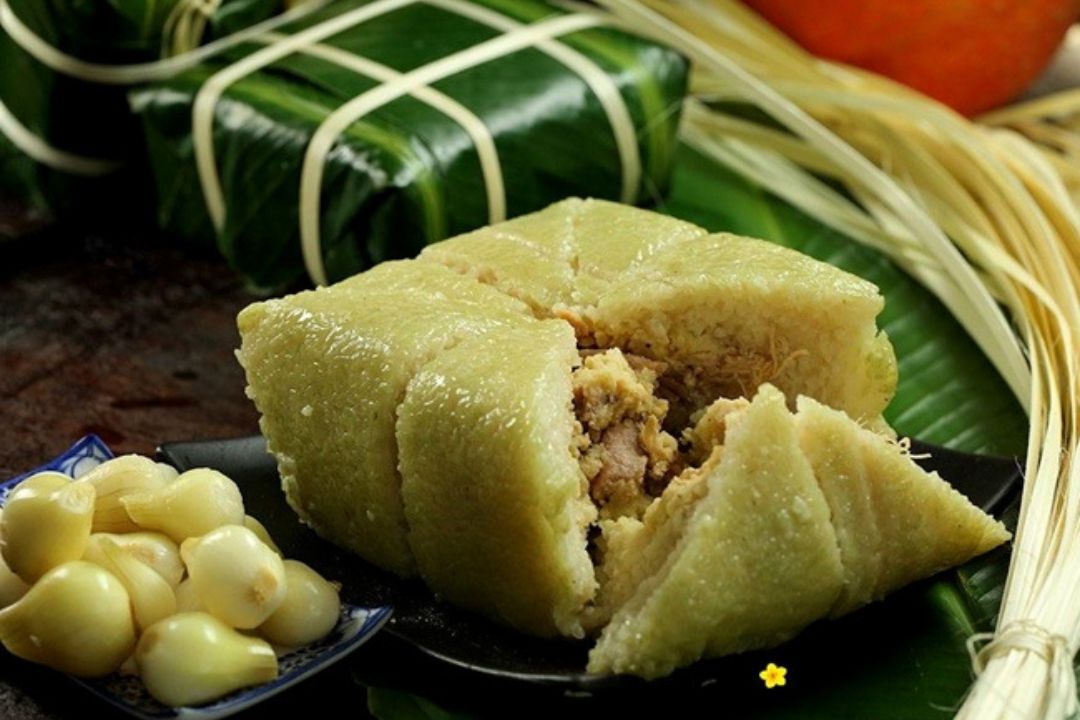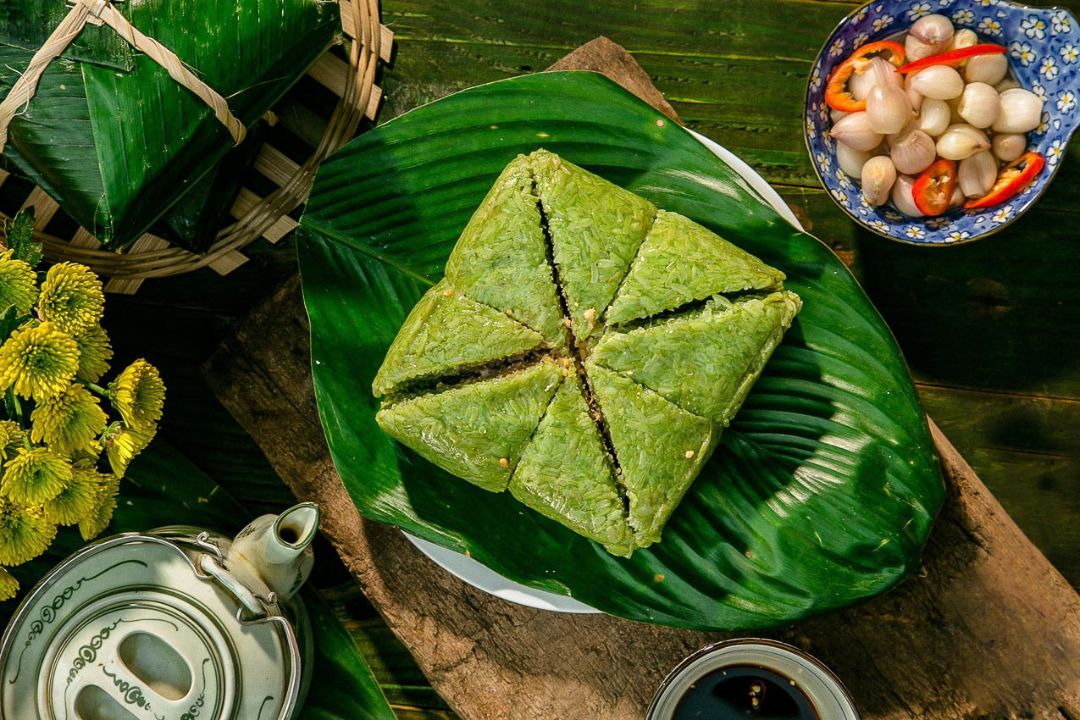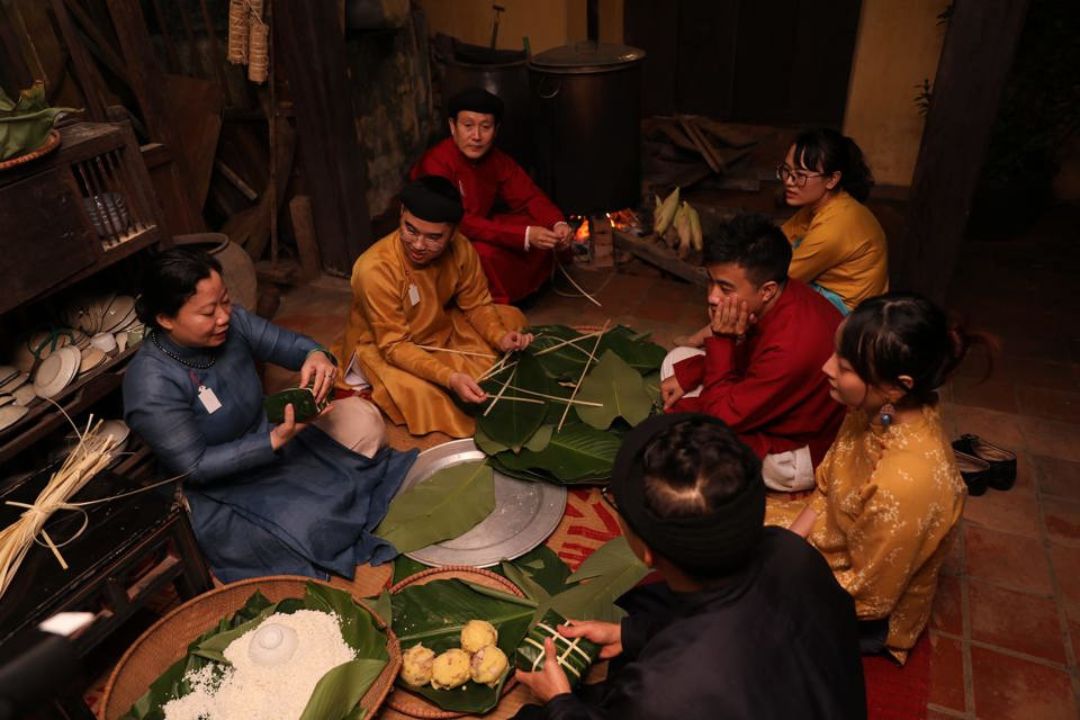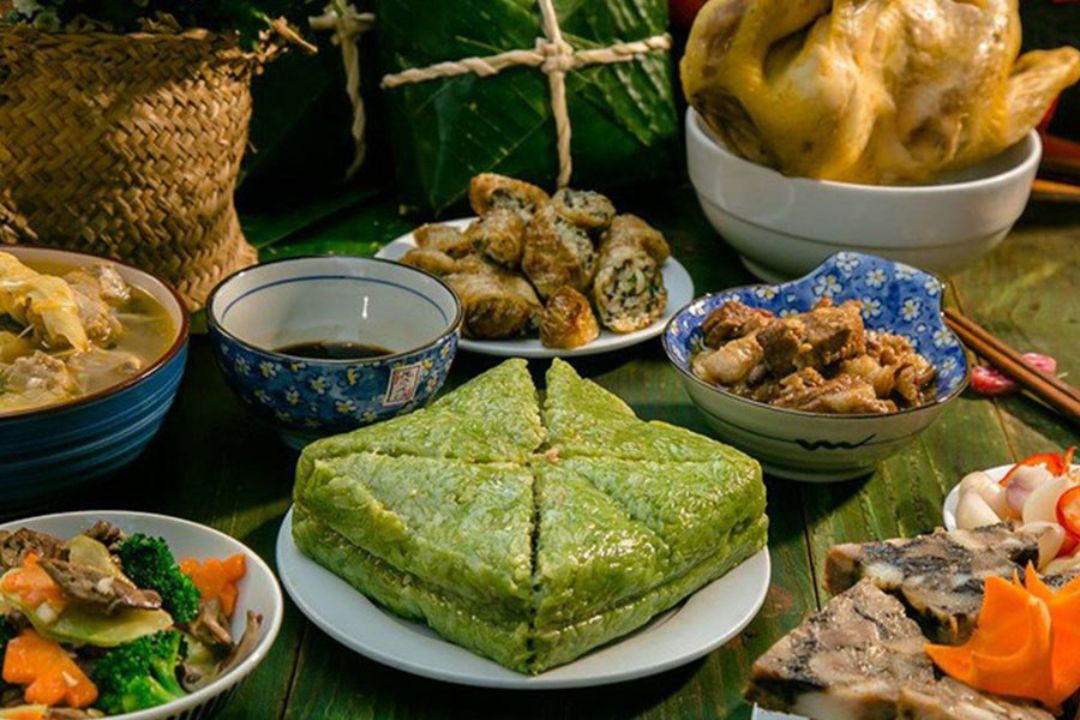“Thịt mỡ dưa hành câu đối đỏ, Cây nêu, tràng pháo, bánh chưng xanh” – these lines evoke the distinctive elements of Tet, especially the green square cake known as “bánh chưng.” Over the years, this cake has become a symbol of traditional Tet cuisine, recognized by people all over the world.
Significance of Bánh Chưng in Traditional Tet:
For the Vietnamese, the absence of “bánh chưng” during Tet seems to create a void in the festive atmosphere. In the days leading up to Tet, families have the tradition of making “bánh chưng,” maintaining a longstanding cultural practice. Additionally, “bánh chưng” is also prepared on the anniversary of Hùng Kings’ Day, observed on the 10th day of the third lunar month.

Symbolism of Bánh Chưng:
From ancient times, the square shape of “bánh chưng” symbolizes the earth. Made from glutinous rice with a greenish hue and filled with ingredients like mung beans, fatty pork, shallots, and pepper, all wrapped in fresh and vibrant dong leaves, it is secured with flexible bamboo strings, forming a square shape that is both visually appealing and meaningful.
The Vietnamese, deeply rooted in an agrarian culture, were heavily reliant on nature. Thus, “bánh chưng” in the Tet feast represents gratitude for favorable weather and bountiful harvests, ensuring a prosperous and abundant life. Beyond its culinary purpose, “bánh chưng” is also placed on ancestral altars during Tet, symbolizing filial piety and respect for ancestors. It is also a meaningful Tet gift that Vietnamese people share with relatives, friends, and display on the Tet altar alongside other offerings.
Legend of Bánh Chưng’s Origin:
In Vietnamese folklore, “bánh chưng” has its origins in the legend of Lang Liêu and the tale of “Bánh chưng bánh dày.” During the reign of the sixth Hùng King, Lang Liêu, facing economic hardship, received a divine message in a dream advising him to use rice as an offering. Following this guidance, he created “bánh chưng” and “bánh dày” – square and round cakes, respectively – as offerings. Among many princes striving to find precious items, Lang Liêu’s simple yet meaningful offerings impressed the king, leading to him inheriting the throne.

Ingredients for Delicious Bánh Chưng:
- 1 kg glutinous rice with a golden blossom
- 400g mung beans
- 400g pork belly
- Salt, seasoning powder, pepper
- Dong leaves, banana leaves
- A bundle of bamboo strings
Simple Steps to Make Bánh Chưng:
Preparation and Preliminary Steps:
- Soak the glutinous rice in water and add about 4g of salt, allowing it to soak for 8 hours before draining.
- Mash the mung beans and soak them for about 4 hours, then peel and drain. Add 4g of salt and mix well.
- Wash and dry dong leaves thoroughly, removing the central spine to make them more flexible.
- Soak bamboo strips in water for about 8 hours and then cut them into thin strands.

Constructing the Cake:
- Place dong leaves on a flat surface, forming a rectangular shape with the help of a mold.
- Add 200g of soaked glutinous rice into the mold, press, and spread it evenly to cover the bottom.
- Evenly spread 100g of mashed mung beans on top of the rice, then add a layer of pork slices.
- Add another 100g of mashed mung beans, ensuring even coverage, and cover it all with 200g of soaked glutinous rice.
- Press down lightly on the corners, and use bamboo strings to tie the cake securely. Trim off excess dong leaves for a neat appearance.
- Fold the edges of the dong leaves, and using scissors, trim any unnecessary parts, keeping the lạt (bamboo strings) visible. Tie the lạt tightly for a secure and neat cake.
Boiling the Cake:
- Place the cakes into a pot, ensuring they are well-distributed.
- Pour water into the pot until the cakes are fully submerged.
- Boil continuously for about 8 hours, ensuring to add water if it evaporates during the process.
Once cooked, remove the cakes, wash off the leaves in cold water to remove any sap, and let them drain. Stack the cakes, placing weights on top to compress and firm them. Store them in the refrigerator or a cool, dry place.
In conclusion, “bánh chưng” stands as a symbol of Tet, representing cultural richness, gratitude, and the enduring spirit of the Vietnamese people. Its preparation involves a blend of culinary expertise, cultural significance, and a touch of spirituality, making it an indispensable part of Tet celebrations. Wherever they are, Vietnamese people eagerly anticipate returning home to share moments of crafting “bánh chưng” and savoring the unique flavors that encapsulate the essence of Tet.
